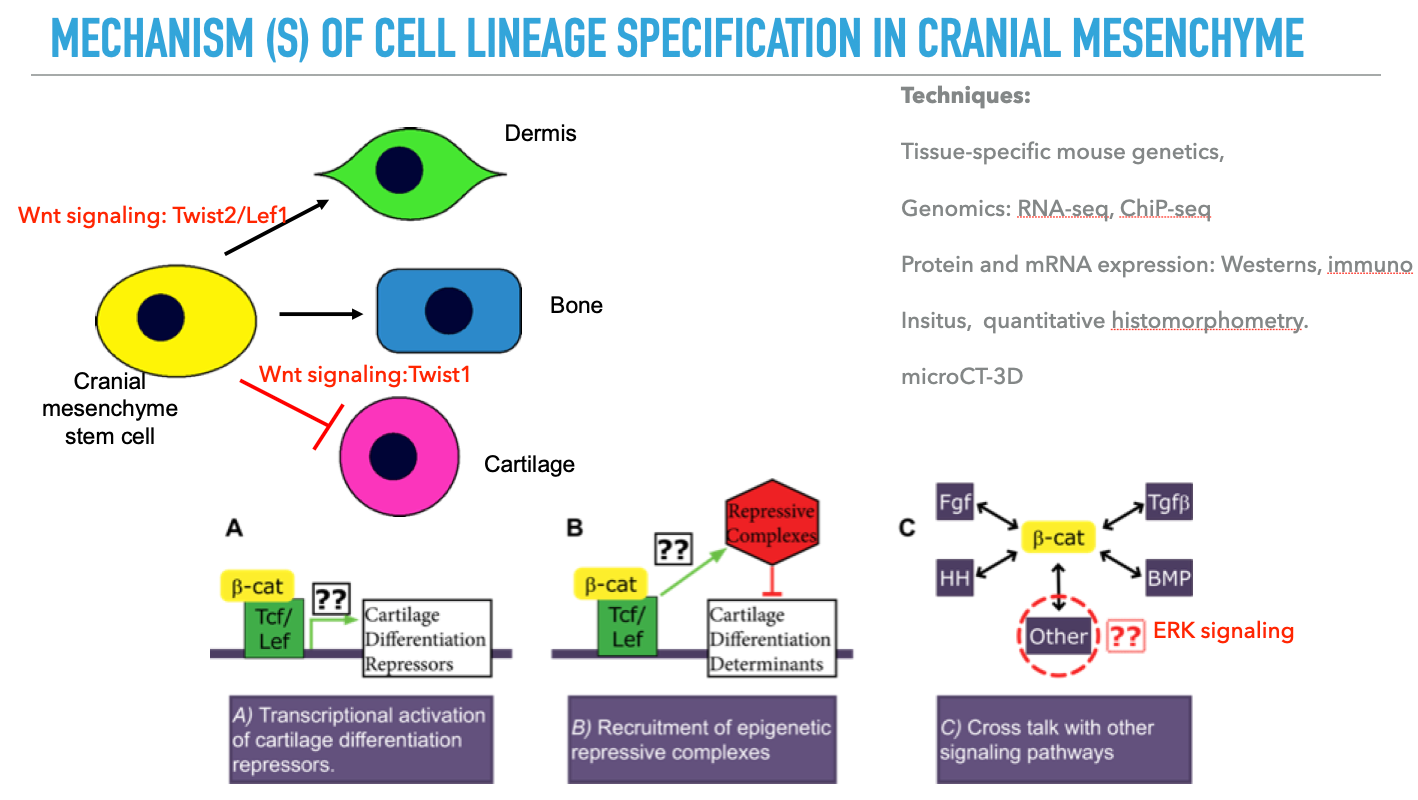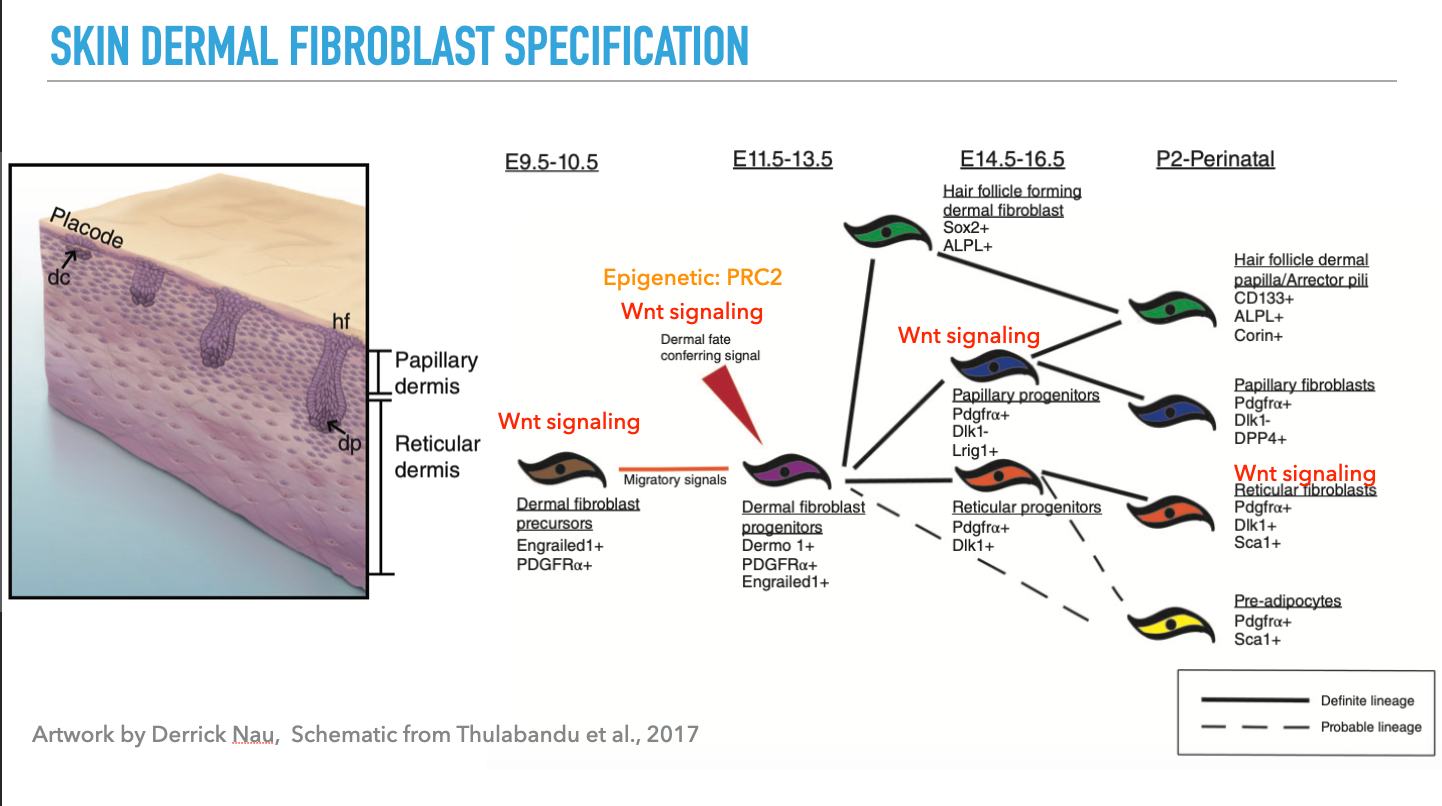We are interested in how cells of the cranial mesenchyme give rise to the calvarial osteoblast, skin on your head and not make cartilage. We found Wnt signaling plays a key role in this decision process (Goodnough et al., 2012; 2014) and it can work with other factors such as Twist genes (Goodnough et al, 2012; 2016) and Erk signaling (Ibarra et al, 2021), but not epigenetic pathway such as PRC2 (Ferguson et al, 2017). Epigenetic factors are required to allow for the calvarial osteoblast differentiation program to proceed and repress Hox genes in the head (Ferguson et al, 2018).
Dermal fibroblasts differentiate and contribute to hair follicle forming fibroblasts in the upper dermis and scar forming fibroblasts in the lower dermis. We have shown Wnt signaling activation is required to make dermal fibroblasts in embryonic development (Atit et al, 2006; Ohtola 2008; Train 2010) and in wound induced hair follicle neogenesis (Myung et al, 2012). Recently we showed, PRC2 epigenetic regulators can control some of the signaling pathways for dermal fibroblasts differentiation and communication to the overlying epidermis (Thulabandu 2021) (Artwork: Derrik Nau).



